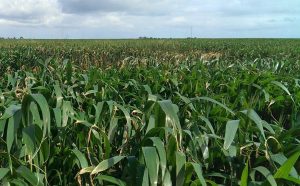To grow a successful durum crop, the aim should be to produce DR1 or grain with 13% or more protein.
Paddock Selection:
Select paddocks with a non-cereal crop in the previous year.
A grain legume is the best choice, followed by canola, although the latter will require more nitrogen fertiliser.
A preceding oaten hay crop is a less preferred possibility.
A SARDI Predicta B soil test for crown rot is a useful additional tool that can be used to aid paddock selection. If a paddock has a total crown rot level greater than 3, it is unwise to grow durum.
Weed Pressure:
Herbicide resistant annual ryegrass is the major weed issue in growing durum. Pyroxasulfone (Sakura 850 R) cannot be used on durum and it is more susceptible to most other pre-emergent herbicides, particularly if using a disc-seeder on some soil types. In general, durum is a very poor competitor with ryegrass, (including new varieties like Aurora), which may result in an escalating ryegrass issue for following crops.
Broad leaf weeds pose no more of a problem in durum, than they do in bread wheat.
Seeding Rate and Time of Seeding:
Most successful durum growers sow at least 100kg/ha, to create a competitive seedling environment. The larger seed size of durum (when compared with bread wheat) is the main reason for this higher rate.
Time of seeding will vary with the district, but as a guide May 1-21. It is suggested that if durum flowers too early (in September), when the weather is cooler, that pollination is incomplete, resulting in less grains per head. Early heading crops are also more likely to develop black fungal staining of the grain (black point) in years with significant spring rainfall.
Fertiliser Strategy:
Before sowing a durum crop, it is useful to know the deep levels (0-60cm) of residual soil nitrogen (N), obtained with a deep soil N test. This means a more accurate calculation of total crop N fertiliser requirement can be made. In season soil testing can also be used to refine these calculations, with some labs now offering quick turnaround times for results.
Sowing a minimum of 50-60 kg/ha of MAP or DAP usually provides a durum crop with enough phosphorus for the crop to grow to maturity and enough N to get the crop to tillering. In areas with consistently higher yields of all crops, higher rates of MAP or DAP may need to be applied to replace Phosphorous removed in grain.
Durum needs adequate Zinc. On some heavier soil types (dark cracking clays), Zinc may be marginal, and a once off application of Zinc in a fertiliser or a spray would be beneficial.
During tillering, most crops will need a top up of N (more if on a canola stubble), with the amount being applied increasing as growing season rainfall increases. A nitrogen calculator can be a good guide for determining the total N fertiliser required to obtain DR1.
Multiple applications of N (urea is the cheapest) are normally required to ensure there is sufficient total N, and to increase grain protein levels. In some wet springs a late application of urea by air or UAN by ground rig during grain fill, will be necessary to achieve DR1. Post tillering, through to heading it is useful to know the levels of leaf tissue nitrate, which will determine the amount of N fertiliser required to achieve DR1 protein levels. Several Analytical Laboratories (e.g. APAL) provide this service.
NDVI (normalized difference vegetation index) measurements (handheld, tractor mounted, plane or satellite) can also be used to measure crop N uptake.
DR1 also needs to have a high Vitreous Kernel count (80%). Generally if protein is adequate, the vitreous kernel count will be satisfactory.

